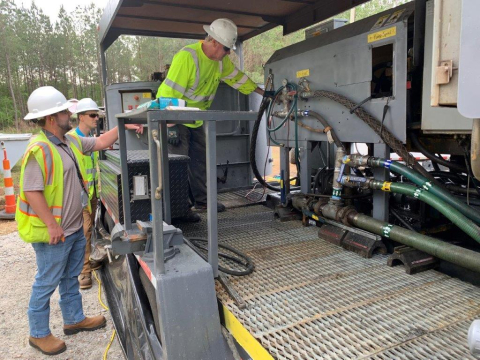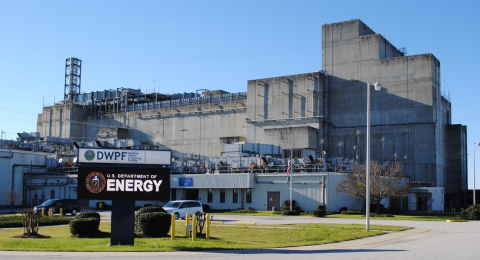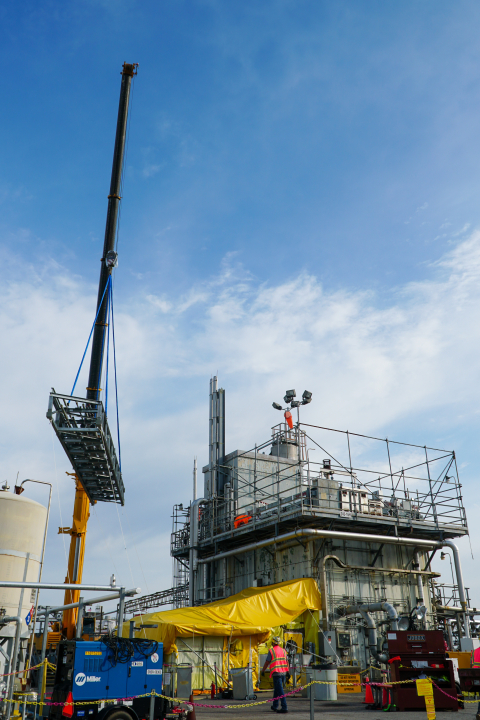
Engineers from EM contractor Savannah River Nuclear Solutions (SRNS) have successfully reduced degreasing solvents beneath the Savannah River Site (SRS), using a technology that injects a form of iron and oil into groundwater.
EM Richland Operations Office (RL) contractor Central Plateau Cleanup Company (CPCCo) is preparing to employ an innovative treatment system at the Hanford Site to speed up the removal of contamination in the soil near the Columbia River.

EM’s vitrification plant at Savannah River Site (SRS) is undergoing a significant process improvement.

EM is improving operational reliability through critical infrastructure replacement at a Savannah River Site (SRS) tank farm.
EM Oak Ridge contractor UCOR has awarded grants to make many ideas possible, from new classroom learning spaces that foster collaboration to opportunities for students to engineer happier fairytale endings.
Hanford Site crews recently completed the first transfer of test water from the Waste Treatment and Immobilization Plant's (WTP) Effluent Management Facility (EMF) to the nearby Liquid Effluent Retention Facility (LERF).
EM partnered with Lawrence Livermore National Laboratory (LLNL) and the U.S. Army Corp of Engineers (USACE) to complete the recent demolition of a building and removal of a reactor to make room for new facilities on the lab’s 1-square-mile footprint.
Wide eyes and eager note-taking hands lined the perimeter of a large conference table in Oak Ridge. Dari Gabriel, a senior environmental engineering student from Benedict College in South Carolina, was one of them.
EM continued a decade-long trend in reducing its energy and water use and greenhouse gas emissions in the fiscal year that ended Sept. 30, 2021.
Robot technology is providing new ways to monitor the integrity of underground double-shell waste-storage tanks at the Hanford Site.

